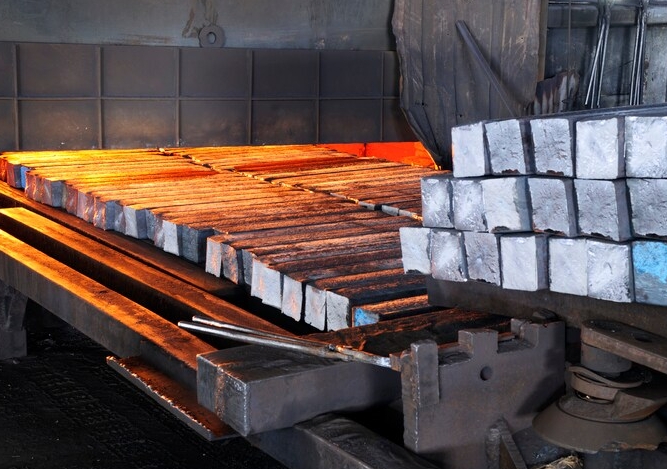
Steel is the main industrial material - underpinning, driving and building our economy. The product is versatile, and there are more than 3,500 catalogued grades in different shapes and quality.
All of these grades begin with molten iron, which is produced either from scrap or iron ore (depending upon the method used) or by continuous casting. The resulting semi-finished products are known as slabs, blooms or billets.

The main raw material for the manufacture of crude steel is iron ore. Open pits and underground mining are used to mine it worldwide. Principal iron ores consist of magnetite. hematite. and siderite. The ores can be brown, dark gray or metallic in colour. Goethite has been added to the group more recently. This black mineral is produced by "weathering".
Smelting iron ore in electric or gas arcs is done. Metals such as chrome, molybdenum and nickel are mixed with nonmetals (boron and silica) and metals to give the resultant molten alloy a broad range of properties. The smelting process is improved and sped up by injecting oxygen into the mixture, known as the furnace charge.
Metallurgical coal, or coking coal, is mined for its ability to transform into a substance called coke, which acts as a key input in steelmaking. The purpose of coke in a steelmaking blast furnace is to eliminate oxygen.
Coke is made by heating bituminous carbon at very high temperatures without any air until all volatile material has vaporized, softened, liquefied, and then resolidified into a hard lump of almost pure carbon. The coal must have low ash or sulfur.
As a result of recent volatility in global supplies, steel mills are scrambling to procure coking coal and have pushed up the price. Coking coal has replaced iron ore as the most expensive raw material for steelmaking. Also, it is the largest contributor of direct CO2 emissions.
Scrap steel is metal removed from finished goods such as appliances, cars and building materials. Steelmaking processes such as Basic Oxygen Furnace and Electric Arc Furnace require steel scrap.
Modern EAF flat product mills use a balance of prime scrap and direct reduced iron (DRI), hot briquetted iron (HBI) or merchant pig iron to produce high quality steels. These steels contain low levels of tramp and are ideal for most applications.
Once tapped from the ladle, the steel is further refined to meet precise customer specifications. The process can include spectrometer test and other added value processing. Examples of such process are slitting and rolling. The steel is then formed into various products, such as:
Iron alloys can be characterized as alloys with another metal. Produced by carbothermic reactions of reduction, addition and co-reduction. They are often used to improve steel properties.
Tonnage wise, high-carbon ferromanganese is by far the most popular bulk ferroalloy. It's used for steelmaking as a deoxidizing element, and also because of its alloying qualities. Also, it helps to control the harmful effects of sulfur.
Ferromolybdenum combines molybdenum with iron. It's used for special steels to improve corrosion and is also used in the manufacture of cutting tools.
The carbon content of steel is between 0.002% to 2.14%. The carbon content of a steel alloy controls many of its physical and chemical properties, such as ductility.
The coal is vital for the chemical reduction of iron ore, in blast-furnaces. This is an essential element in case-hardening which improves the strength of finished components.
Carbon is generated by fossil fuels in the steelmaking process, which can generate up to 78% in direct emissions. The research on alternative carbon resources such as plastics, rubber, or biomass is ongoing. This includes technical assessments and life-cycle analyses, research into slag foaming at the fundamental level, and pilot scale and industrial investigations. Energy efficient processes are key to decarbonizing existing steel plants.

Write a Message